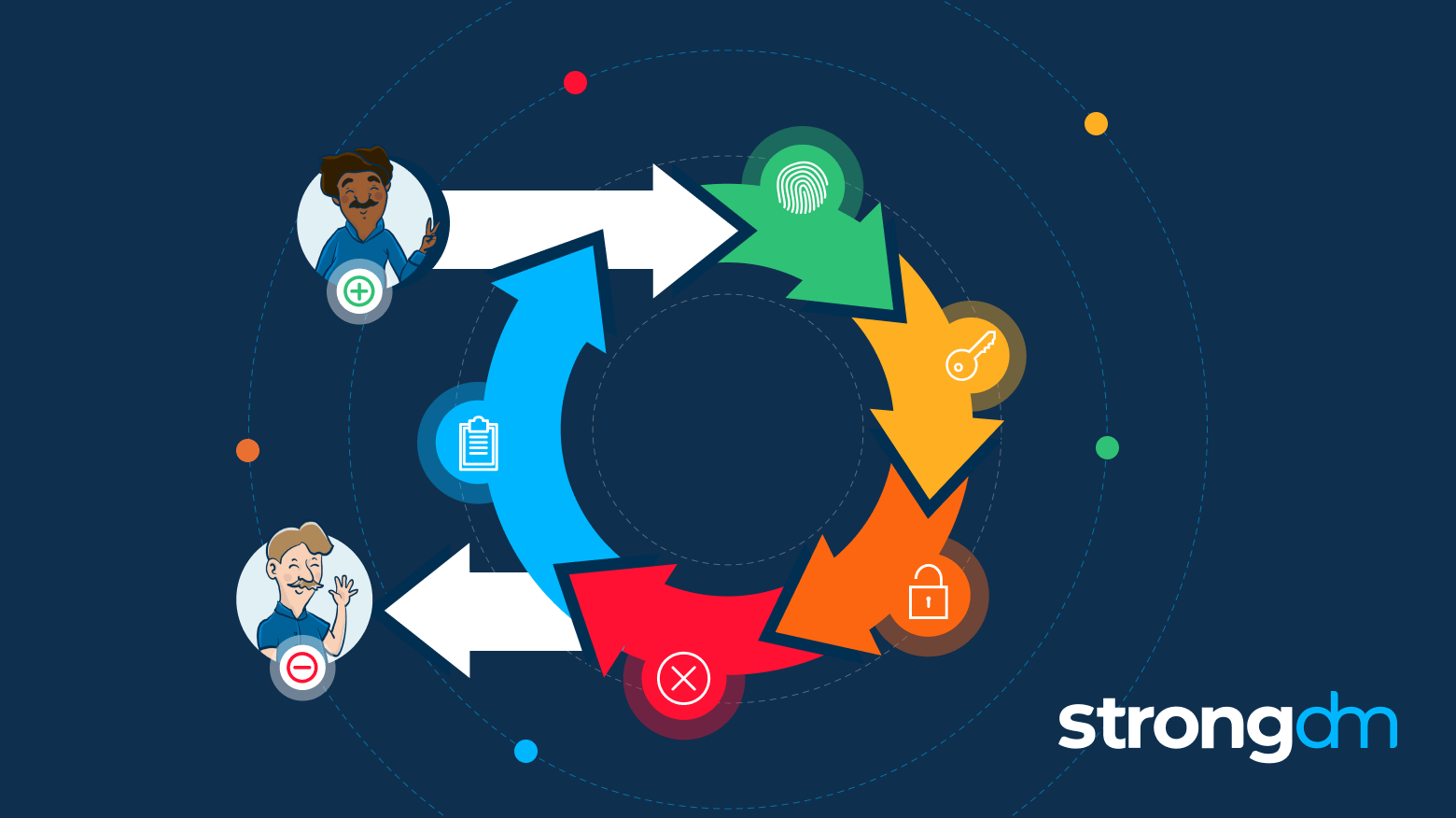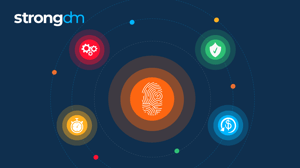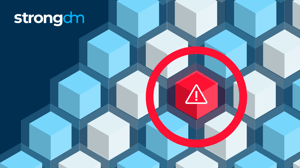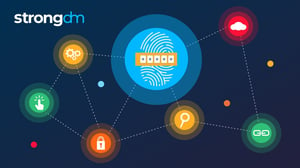What is IGA? Identity Governance & Administration Explained


Written by
John MartinezLast updated on:
October 17, 2025Reading time:
Contents
Built for Security. Loved by Devs.
- Free Trial — No Credit Card Needed
- Full Access to All Features
- Trusted by the Fortune 100, early startups, and everyone in between
Summary: In this article, we’ll take a broad look at identity governance and administration (IGA) and examine how it differs from other IT risk mitigation topics. You’ll get insight into the history, benefits, and features of IGA and learn how to start planning an IGA implementation of your own. By the end of the article, you’ll have a clearer understanding of the components of IGA management and the challenges IGA can solve, and you’ll know what to look for in a scalable solution.
What Is Identity Governance and Administration (IGA)?
Identity governance and administration (IGA), also called identity security, is a set of policies that allow firms to mitigate cyber risk and comply with government regulations to protect sensitive data. These policies help prevent breaches by ensuring that the right employees access data only as needed.
Identity governance comprises role management, segregation of duties, analytics, logging, and reporting to give organizations insight into access privileges, as well as various tools used to detect suspicious activity. It includes identity administration, identity and access management (IAM), provisioning, entitlements, credential management, and authentication. Together, IGA allows enterprises to combine identity management functions and technologies proactively into a holistic strategy.
IGA solutions typically include an artificial intelligence (AI) function that recognizes patterns in login and user activity across devices and apps, allowing teams to be notified of possible breaches quickly. In addition, IGA provides a bird's-eye view of multiple platforms in a single place, so organizations can audit and report on identity management. An overview allows for increased scrutiny of typical platform behavior so atypical behavior doesn’t slip through the cracks.
Brief History of IGA
IGA emerged as more users needed access to organizational resources from more devices and locations, which introduced more security risks. Legislation such as the 1996 Health Care Portability and Accountability Act (HIPAA), the 2002 Sarbanes-Oxley Act (SOX), the 2016 General Data Protection Regulation (GDPR), and compliance standards like ISO 27001 further increased pressure on corporations to institute stringent identity management.
Today, companies need to support employee access to cloud-based platforms and applications. They face complicated provisioning, varying access levels, and the challenge of scaling access as users and locations multiply. IGA requires business know-how and technological understanding, as stakeholders must develop individualized strategies unique to their specific work environment, data risk profile, and business model. Once implemented, companies can lean on AI and visibility tools to help scale identity management, compliance, and security.
Benefits of IGA
Digital work environments are increasing in complexity, with more demands for access to more apps. In fact, companies will deploy 95% of new digital workloads to the cloud by 2025. Each new application requires a new onboarding process and point of entry, complicating access.
IGA ensures enterprises can scale their complex environments, keeping the convenience of cloud-based services without the specter of escalating breaches.
Benefits of IGA include
- Scalable access: Because it’s automated, access is more easily scalable to multiple environments with multiple permissions. That makes for faster provisioning, even as the number of users grows.
- Streamlined user lifecycle: Automation makes employee onboarding and offboarding practically effortless. When employees change roles, their permissions change immediately—just adjust their role, and all apps and databases set the correct access level.
- Automatic logging of access requests: A central vantage point ensures visibility into possible breaches, providing greater control over users, devices, and networks. That makes problems easier to spot and resolve.
- Enhanced reporting: Reports and analytics include information from across the entire IT environment for easy auditing. Automated reporting minimizes errors and supports more accurate decision-making.
- Safer remote and hybrid work: Employees, regardless of their location, can access the data they need from multiple devices. That lets businesses stay flexible and workers stay productive.
IGA Features
Comprehensive identity governance solutions have evolved to handle security, compliance, and efficiency challenges in the age of the cloud. They have expanded from creating and managing user accounts, roles, and access rights to providing more integrated policy management. Augmented by artificial intelligence, modern solutions offer the ability to analyze patterns, such as role entitlements and access request times, and flag potential discrepancies.
Many integrated solutions offer both IGA and more traditional access management features, such as authorization or authentication. So, leaders need to assess the specific needs of their organization.
Differing Needs: Different Feature Sets
IGA starts with some of these traditional identity management features:
- Entitlement management: Provides the ability to manage multiple access levels within apps so users can have customized entitlements.
- Connectors: Integration connectors bring directories and platforms together with information about users and their permissions.
- Simplified access review and provisioning: IT teams can verify user access and revoke access easily when users leave an organization, including across multiple platforms and apps both off and on premises.
- Self-service options: Workers can request permissions independently, especially for automated processes that don’t require an agent’s time, such as setting and changing passwords.
The most advanced, compliance-minded identity governance and administration solutions add features such as
- Segregation of duties: Security leaders can establish rights to prevent fraud within an application or across systems. For instance, custom permissions provide the ability to allow or prohibit access within a system. This ensures that even administrators who have access privileges to a database cannot complete transactions when compliance requires a separation of powers.
- Role-based access control: Teams can automate access by role, changing a role automatically so that a user’s new permissions cascade to all platforms, even when the username remains the same. This feature minimizes excessive permissions.
- Enhanced reporting: Viewing users, access, and potential breaches across platforms offers greater visibility, so you can sort, group, and summarize information.
- Ongoing auditing: Upon receiving an instant notification that flags a suspicious access request, administrators can seek guidance and implement remediation quickly. They can also document requests to prove compliance.
- Artificial intelligence: Automation can help continuously monitor for suspicious activity and provide instant incident alerts, speeding incident response time in case of a breach and escalating concerns to the team.
IGA vs. IAM: What's the Difference?
Because of overlap in identity, access-based, and governance solutions, many wonder about the difference between IAM and IGA. They also question how IAM differs from privileged access management (PAM), which is a more specific type of IAM access that focuses on privileged users. Broader IAM focuses on authenticating users’ identities and authorizing them to access data. Authentication relates to how systems verify users based on identifying criteria, from passwords to multi-factor authentication or biometrics. Authorization relates to how administrators control access to data within apps.
Broader still, IGA encompasses the processes and enforcement mechanisms of IAM. It includes the policies that firms use to monitor security in their information systems, addressing business, legal, regulatory, and technological challenges. In contrast, IAM refers to the technologies companies use to manage access to their systems. IAM is based on privileges and comprises the tools leaders use to carry out their broader identity governance and administration priorities.
IAM Tools that Constitute IGA Security Governance
Controlling access is one way an organization enforces its security strategy. Many companies, therefore, practice governance already using IAM tools. Multiple parts of IAM technologies are crucial IGA tools, including
- Access controls: Role or attribute-based access controls based on job titles, roles, or even phone numbers and addresses from employee, customer, or client databases
- Account management: The software or processes an organization uses to create accounts and provision software and devices
- Authentication and password management: Tools used to verify identity and allow access to networks and apps
- Compliance management: Methods of monitoring access and creating logs for compliance audits
IAM tools often overlap. For example, account management and access controls both involve elements of authentication. Bringing these components together transforms IAM into the compliance-based IGA. Both are parts of a broad IT function that protects an enterprise from cyber risk.
IGA Implementation
How do you implement identity governance? Because identity governance and administration is a broad, strategic approach to cybersecurity, the best implementations are phased and start with an assessment of risk and a comprehensive mitigation plan. Here are the steps to get started:
- Identify components: Look at current IGA processes to understand identity governance and administration pain points. Start the journey by listing problems and the skills and stakeholders it will take to solve them. Companies may need industry expertise, IT expertise, or both.
- Assess current risks and future goals: Prioritize security goals based on business risks, but balance immediate needs with a product’s longer-term capability to perform with other tools as part of an ecosystem.
- Identify technologies to meet goals: Get specific about the architecture and connectors needed to secure the environment and scale those solutions into the future. What’s the relationship between IGA identity technologies and current platforms? Consider ease of deployment and operation in your analysis.
- Implement new capabilities: Start with new applications and capabilities that offer quick wins, such as those that automate onboarding and offboarding.
- Create a culture of compliance: Train employees on solutions and their rationale, so people can look for opportunities where remediation might help.
- Revise and reassess: Because IGA is an ongoing business imperative, changes in the business climate, available technologies, and government regulations all require an implementation to be reassessed continuously. In addition, the improved analytics and reporting from an initial implementation can help identify new risk areas.
5 Reasons Why Your Organization May Need an IGA Solution
Access vulnerabilities can turn into material problems quickly, and IGA exists to help companies identify where the most significant problems lurk, preventing issues from becoming disasters. There are five important reasons why implementing an IGA platform makes good business sense:
- IGA solutions are the foundation for meeting regulatory obligations. Government regulators require compliance for industries that deal with sensitive financial or health data. Noncompliance can lead to fines or even criminal charges. An inadequate solution in the healthcare industry could delay patient care, so meeting the need for instant privileged access is crucial.
- IGA solutions bolster trust with new clients and can lead to new contracts. Federal contract bidding often requires security compliance certifications, and voluntary certification can help assuage the reservations of other potential clients, giving organizations a competitive advantage.
- IGA solutions make companies more efficient. Automated processes save time and let workers concentrate on high-value areas where they get more done with fewer resources. When technology allows, making manual processes automatic enables businesses to deliver value better.
- IGA solutions save money. Automation saves time and money, making processes lightning-fast, so profits stay high. Repetitive tasks, such as provisioning, get done faster, and at a lower cost. That savings compounds as the business scales.
- IGA solutions protect companies from excess risk. Costs associated with data breaches are expensive: the average cost is $4.35 million, up 12.7% since 2020. Identity governance and administration tools that detect breaches and speed response times save companies the pain of addressing a costly breach after it happens.
How to Choose the Right IGA Solution
The right IGA solution enables a business to solve current risk challenges as it helps an organization scale into the future. With that in mind, look for solutions that can
- Scale with cloud architecture: Prioritize solutions that scale to incorporate more employees, vendors, and applications. Organizations not only add users, they also add to their stacks. With more organizations depending on cloud and hybrid architecture, IGA that maintains compliance across systems can successfully grow with the business.
- Make data simple to understand: Implement software that reduces IT stakeholders’ dependence on manual analysis. A straightforward governance program with easy-to-interpret data makes decision-making easier and ensures greater control.
- Utilize a risk-based approach: Systems should use risk-based decision-making for user privileges to minimize excessive access privileges after a project ends or when an employee leaves the organization.
- Ensure least-privilege access: Within applications, ensure users have access to only the data required to do their jobs and that their access is verified continually. This just-in-time provisioning can help eliminate standing privileges that put organizations at risk.
- Automate more processes: Manual access review is error prone. Look for automated reviews that escalate high-risk requests for manual review.
- Incorporate artificial intelligence: A system that quantifies risk can help an organization manage it better. Look for analytics that inform intelligent decision-making with data that supports managing the identity lifecycle, certification campaigns, and access requests.
Identity Governance & Administration (IGA) with StrongDM
StrongDM’s identity management helps organizations control the chaos of provisioning new users and platforms. It provides centralized identity management, allows for an expanded suite of automations, and ensures auditable access for all, exactly when they need it.
StrongDM combines the auditing organizations' need for compliance with identity management solutions made simple. Compliance officers can view controls, assemble evidence, and save time when compiling access logs for compliance certification. IT specialists can automate access management, freeing up time to create more business value, all while eliminating unauthorized access.
Strong IGA starts with StrongDM
Today's organizations rely on a complex landscape of cloud-based applications and global employees. These changes have benefited businesses and introduced risk, just as they have added to an evolving glossary of infrastructure access terminology. Ultimately, IGA solutions address the access-management needs of a cloud-based architecture as they embrace this complex, expanding ecosystem.
Explore how easy it can be to manage cloud access and maintain compliance with a free, 14-day StrongDM trial.
Next Steps
StrongDM unifies access management across databases, servers, clusters, and more—for IT, security, and DevOps teams.
- Learn how StrongDM works
- Book a personalized demo
- Start your free StrongDM trial

Categories:

About the Author
John Martinez, Technical Evangelist, has had a long 30+ year career in systems engineering and architecture, but has spent the last 13+ years working on the Cloud, and specifically, Cloud Security. He's currently the Technical Evangelist at StrongDM, taking the message of Zero Trust Privileged Access Management (PAM) to the world. As a practitioner, he architected and created cloud automation, DevOps, and security and compliance solutions at Netflix and Adobe. He worked closely with customers at Evident.io, where he was telling the world about how cloud security should be done at conferences, meetups and customer sessions. Before coming to StrongDM, he lead an innovations and solutions team at Palo Alto Networks, working across many of the company's security products.
You May Also Like




